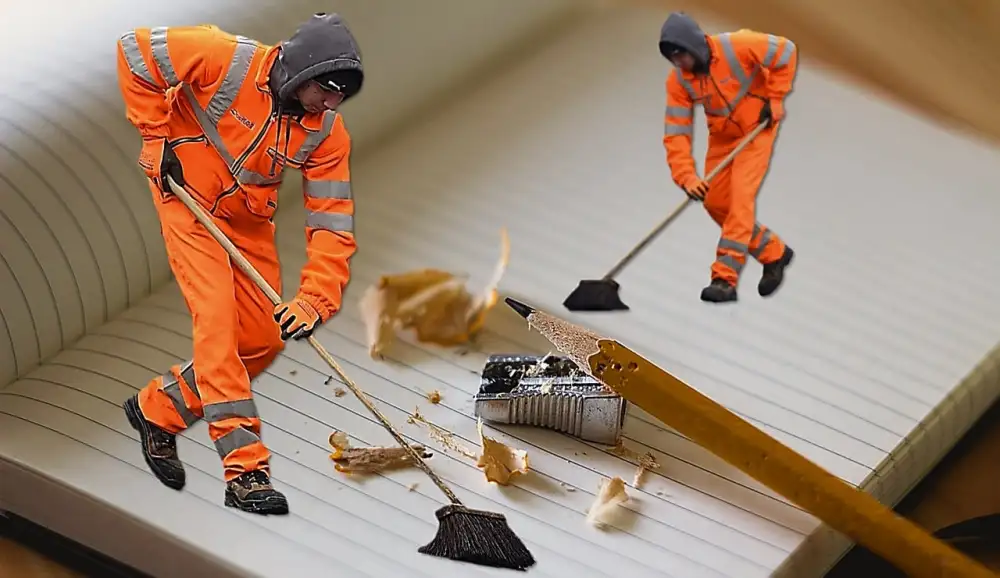Master the Art of Cleaning a Cast Iron Skillet: Essential Tips and Techniques for a Sparkling Kitchen

- Gather the necessary materials for cleaning
- Preparing the skillet for cleaning
- Cleaning the skillet using mild soap and water
- Removing stubborn residue with a scrub brush or chainmail scrubber
- Drying the skillet thoroughly to prevent rust
- Applying a thin layer of oil to season the skillet
- Storing the skillet properly to maintain its quality
Cleaning a cast iron skillet is an essential task that should not be overlooked. Not only does proper cleaning ensure a sparkling kitchen, but it also helps maintain the quality and longevity of your skillet. Cast iron skillets are known for their superior heat retention and even cooking, making them a favorite among chefs and home cooks alike. However, without regular cleaning, these versatile kitchen tools can become sticky, greasy, and prone to rust. By mastering the art of cleaning a cast iron skillet, you can ensure that it remains in pristine condition and ready to deliver delicious meals for years to come.
Gather the necessary materials for cleaning
To effectively clean a cast iron skillet, it is important to gather the necessary materials beforehand. Here are the essential items you will need:
1. Mild dish soap: Choose a gentle soap that won't strip away the skillet's seasoning.
2. Soft sponge or cloth: Opt for a non-abrasive material to avoid scratching the surface of the skillet.
3. Scrub brush or chainmail scrubber: These tools are useful for removing stubborn residue without damaging the skillet.
4. Paper towels or clean cloth: These will be needed for drying the skillet thoroughly after cleaning.
5. Cooking oil or shortening: A small amount of oil is required to season the skillet and prevent rusting.
By having these materials ready, you can ensure a smooth and efficient cleaning process for your cast iron skillet.
Preparing the skillet for cleaning
Preparing the skillet for cleaning is an essential step to ensure effective and efficient removal of food residue. Start by allowing the skillet to cool down completely before handling it. This will prevent any accidental burns or injuries. Once cooled, use a paper towel or a soft cloth to wipe away any excess oil or grease from the surface of the skillet. If there are any large food particles stuck to the skillet, gently scrape them off using a wooden spatula or a plastic scraper. Avoid using metal utensils as they can scratch the seasoning of the skillet. By properly preparing the skillet, you set yourself up for a successful cleaning process and maintain its longevity.
Cleaning the skillet using mild soap and water
To clean a cast iron skillet, start by rinsing it with hot water to remove any loose debris. Then, add a small amount of mild dish soap to the skillet and scrub gently with a sponge or brush. Avoid using harsh chemicals or abrasive cleaners as they can damage the seasoning of the skillet. Rinse thoroughly to remove all soap residue. Remember, soap is safe to use on cast iron as long as it is used in moderation and followed by thorough drying.
Removing stubborn residue with a scrub brush or chainmail scrubber
Removing stubborn residue from a cast iron skillet can be a challenge, but with the right tools, it can be easily accomplished. One effective method is to use a scrub brush or a chainmail scrubber specifically designed for cast iron cookware. These tools are ideal for removing stuck-on food particles without damaging the skillet's seasoning.
To begin, rinse the skillet under warm water to loosen any debris. Then, gently scrub the surface of the skillet using a scrub brush or chainmail scrubber. The bristles of the brush or the interlocking rings of the chainmail will help dislodge stubborn residue without scratching or stripping away the seasoning.
For tough stains or burnt-on food, apply a small amount of mild dish soap to the scrub brush or chainmail scrubber before cleaning. This will provide extra cleaning power without harming the skillet's seasoning. Remember to use only mild soap as harsh detergents can strip away the protective layer.
Work in circular motions and apply gentle pressure while scrubbing to avoid damaging the skillet's surface. Pay close attention to areas with heavy buildup and continue until all residue is removed.
Afterward, rinse off any remaining soap residue under warm water and inspect the skillet for any missed spots. If necessary, repeat the process until your cast iron skillet is free from stubborn residue.
By using a scrub brush or chainmail scrubber, you can effectively remove tough residue from your cast iron skillet while preserving its seasoned surface. This ensures that your skillet remains in optimal condition for cooking delicious meals for years to come.
Drying the skillet thoroughly to prevent rust
Drying the skillet thoroughly after cleaning is crucial to prevent rust from forming. To do this, use a clean towel or paper towels to wipe away any excess moisture. Make sure to reach all the nooks and crannies of the skillet, including the handle and sides. Leaving any moisture behind can lead to rusting over time, which can damage the skillet's surface and affect its cooking performance. Take extra care to dry the skillet completely, as even small amounts of water can cause rust to develop.
Applying a thin layer of oil to season the skillet
Applying a thin layer of oil to season the skillet is an essential step in maintaining its quality. Seasoning creates a natural non-stick surface and helps prevent rusting. After cleaning and drying the skillet, pour a small amount of vegetable oil or melted shortening onto a paper towel. Rub the oil all over the skillet, including the handle and exterior. Make sure to coat every surface evenly. Place the skillet upside down in an oven preheated to 350°F (175°C) for one hour. This process polymerizes the oil, forming a protective layer that enhances the skillet's durability and improves its cooking performance. Repeat this seasoning process periodically to keep your cast iron skillet in top condition.
Storing the skillet properly to maintain its quality
Storing the skillet properly is crucial to maintain its quality and prevent any damage. After cleaning and drying the skillet, make sure it is completely cool before storing it. Avoid stacking other heavy items on top of it, as this can cause chipping or scratching. To prevent moisture buildup, place a paper towel or cloth inside the skillet to absorb any excess moisture. Store it in a dry place with low humidity to prevent rusting. If possible, store the skillet with its lid on to provide additional protection. By following these storage tips, you can ensure that your cast iron skillet remains in excellent condition for years to come.
In conclusion, regular cleaning is essential for maintaining the quality and longevity of your cast iron skillet. By properly cleaning and caring for your skillet, you can enjoy its many benefits for years to come. Regular cleaning helps to remove food residue, prevent rust, and maintain the skillet's non-stick surface. It also ensures that your food tastes better and is free from any unwanted flavors. So, make it a habit to clean your cast iron skillet after each use and follow the proper steps outlined in this article. Your sparkling kitchen and delicious meals will thank you!
Published: 23. 02. 2024
Category: Home



